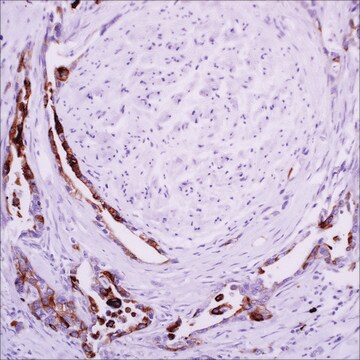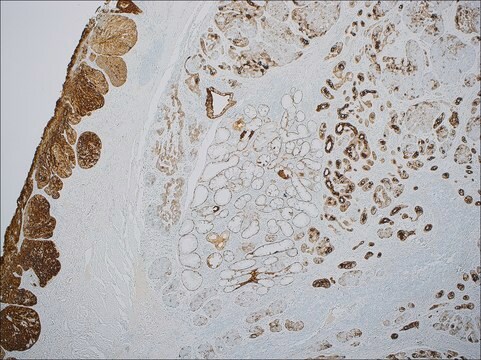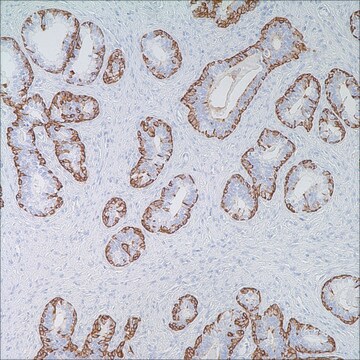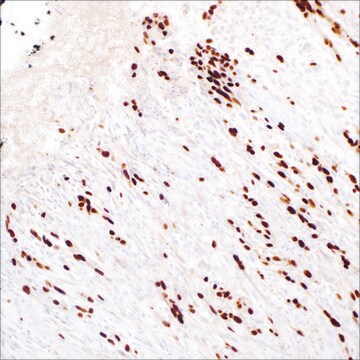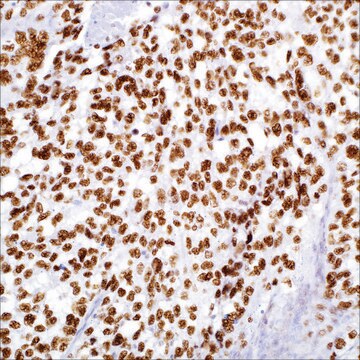280C-1
Mammaglobin Cocktail (304-1A5 & 31A5)
Mouse & Rabbit Cocktail Antibody
Synonyme(s) :
Mammaglobin Cocktail (304-1A5 & 31A5) Mouse/Rabbit Monoclonal Antibodies
About This Item
Produits recommandés
Source biologique
mouse
rabbit
Niveau de qualité
100
300
500
Conjugué
unconjugated
Forme d'anticorps
purified immunoglobulin
Type de produit anticorps
primary antibodies
Clone
304-1A5/31A5, monoclonal
Description
For In Vitro Diagnostic Use in Select Regions (See Chart).
Forme
buffered aqueous solution
Espèces réactives
human
Conditionnement
vial of 0.1 mL concentrate (280C-14-ASR)
vial of 0.5 mL concentrate (280C-15-ASR)
bottle of 1.0 mL predilute (280C-17-ASR)
vial of 1.0 mL concentrate (280C-16-ASR)
bottle of 7.0 mL predilute (280C-18-ASR)
Concentration
0.01-1 μg/mL (predilute)
2-270 μg/mL (concentrate)
Technique(s)
immunohistochemistry: 1:100-1:500
Isotype
IgG1
IgG
Conditions d'expédition
wet ice
Température de stockage
2-8°C
Informations sur le gène
human ... SCGB2A2(4250)
Description générale
Qualité
 IVD |  IVD |  IVD |  RUO |
Forme physique
Notes préparatoires
Note: This requires a keycode which can be found on your packaging or product label.
Download the latest released IFU
Note: This IFU may not apply to your specific product lot.
Autres remarques
Vous ne trouvez pas le bon produit ?
Essayez notre Outil de sélection de produits.
Faites votre choix parmi les versions les plus récentes :
Certificats d'analyse (COA)
Désolés, nous n'avons pas de COA pour ce produit disponible en ligne pour le moment.
Si vous avez besoin d'assistance, veuillez contacter Service Clients
Déjà en possession de ce produit ?
Retrouvez la documentation relative aux produits que vous avez récemment achetés dans la Bibliothèque de documents.
Notre équipe de scientifiques dispose d'une expérience dans tous les secteurs de la recherche, notamment en sciences de la vie, science des matériaux, synthèse chimique, chromatographie, analyse et dans de nombreux autres domaines..
Contacter notre Service technique
